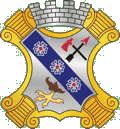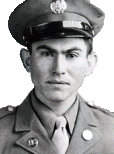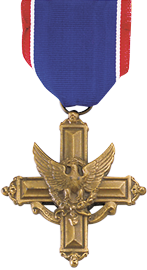(28 November - 4 December 1944)


28 November 1944
Effective 280800 the 4th Division’s north boundary was moved southward, reducing the 8th Infantry’s sector to 2,000 yards. Also on this morning the 12th Inf was committed in the northern part of the 22d’s sector, thus filling the troublesome gap which had existed since the beginning of the operation between the 8th and 22d. The 4th Div now had a frontage and disposition appropriate for a strong attack. Unfortunately, the infantry units were no longer in condition to make such an attack.
4th Division orders for Nov 28 directed the 8th Inf to hold in place, while the 12th was to clear the area in the center of the division sector and seize approaches to Gey, and the 22d was to capture Grosshau and the high ground east of the town. During the day the 12th came abreast of the flank regiments, but the 22d did not attack Grosshau.
At 1500, Nov 28, Gen Barton issued oral orders for a general attack next day. The 8th's objective for the day was Hof Hardt. The 12th was ordered to be positioned for an attack on Gey early Nov 30. The 22d was again ordered to take Grosshau and high ground east of it, in conjunction with CCR, 5th Armored Division (V Corps), which was now it Kleinhau.
29 November 1944
The 8th Infantry Regiment attacked with the 1st and 2d Bns, keeping the 3d in reserve. Again Col McKee executed an abrupt shift before striking. The 1st Bn, which was in position on the extreme south flank, moved to the center and attacked along the ridge between Fisch end Ursprungs creeks, astride the firebreak. This battalion was supported by two platoons of tanks and three TD's. The 2d Bn moved from the center to the extreme north flank and attacked parallel to the trail which runs from Jagerhaus to Hof Hardt.

The Germans had organized defenses to a depth of at least 1,000 yards, the forward edge being half-way between Jagerhaus and Hof Hardt. They had entrenchments, many well-emplaced machine guns, and extensive minefields, but not the solid belts of wire and mines which had guarded their original line. It seems likely that the defenses in this area were created during the four day lull in the action.
The 2d Bn was hit by a counterattack just at the jump off, and two platoons of the reserve company, E, were committed against it. After it was driven back, Cos F and G advanced for a few hundred yards, then were stopped.
The 1st Bn had no better success. When they got within a couple of hundred yards of the trail junction at 051424, both assault companies were stopped by heavy small arms fire. This was a very dense woods of young pine trees, with visibility only a few yards, and the enemy was well dug in. It was a small arms fight, with little artillery fire from either side, and the defenders had the advantage. The 1st Bn dug in for the night.
30 November 1944
The attack was renewed. The fichting increased in violence, othervise there was no material change in the situation. Cos B and C and the two platoons of tanks made repeated attenpts to advance, using a variety of formations; a flanking move by Co A was also tried, withont success. Although the opposing lines were very close, they were invisible to each other. But the German machine guns did well enough without observation, and their bazookas kept our tanks at a distance, while our blind fire had little effect on them.
It was the same with the 2d Bn, which started its attack by sending the reserve company around the open north flank under cover of a feint by F and G. Sut the German flank was not open, and the enveloping company met immediate and effective resistance. Cos E and G eventually moved forward about 200 yards, but that was the only result of an all-day fight that brought severe casualties to the battalion. The advance placed the 2d Bn in direct contact with the same MLR that was holding the 1st Bn.
At 1400 the 3d Bn was committed in an attempt to envelop the enemy left by moving up from the south against the trail junction at 054425. But that area too wvas heavily defended, and the 3d Bn’s route of approach led acoss open ground which it was unable to cross in the hour or so of daylight that remained. The attempt was abandoned and the 3d Bn withdrew.
1 December 1944
Co C pulled back, shifted about 200 yards left, ansdattacked along the south bank of Ursprungs creek, followed by Co. A. The move apparently gained some surprise. But Co C lost ten men as a result of mines and artillery in reaching the enemy MLR. The principal defense here on the creek bankseems to have been mines, and Co C continued to advance, though very slowly. At 1130 the 3d Bn was committed between the other two, just north of Ursprungs creek, with Co K between the creek and the road and I just north of the road. The effect of this manueuver was that four companies were attacking on a front of 200-300 yards, astride the creek, while the 2d Bn also attacked only a short distance on the left.
The commander of Capt Marsden, had during the four months he had led that unit, established a reputation among of the hardest fighting company commanders in the division. In this attack, Co I is credited by the regiment with making the front breach in the enemy line. The fighting was of unusual violence, with extremely heavt and continous small arms fighting by both sides. Co l went through an extensive minefield, under all the enemy fire, where it suffered heavy losses. The attached machine gun platoonn lost over half its strength in this minefield, and there Capt Marsden wasc wounded. But the executive officer led the company on through the mines to close with the enemy, after which the fight, as usual, did not last long. 25 prisoners were taken.
South of Co I, K had followed slightly behind, sticking to the narrow strip of ground between the road and the creek, and having comparativly little trouble. After getting through the enemy line, K crossed the creek, and continued due east. Heavy losses were suffered from mines - artillery, including the company commander, and the company was somewhat shaken. But it pushed on far enough to come abreast of Co C, which had also broken through. A came behind C, and took position on the right side of the little salient, facing south. The three companies dug in for the night under fire from close positions on three sides.
North of Co I, the 2d Bn also broke through. While E and F furnished a base of fire, G flanked to the left. After G got through the line, E and F were also able to gain of about 250 yards. This put the 2d Bn approximately abreast of the 3rd and 1st.
Such was the third day of renewed attack. The enemy's first line was breached on an 800 yard front, though to little depth. The Germans were still resisting strongly from prepared positions in rear. All three battalions had lost heavely.
2 December 1944
Co I spearheeced again, and captured the fortified enemy position around the RJ 054429. 2d Bn on the north flank and Cos K and C on the south also advanced several hundred yards. The Germans defended as fiercely as on the previous day, and again the fighting was at very close quarters. Co C was finally able to advance by firing its mortars at ranges of 60 to 100 yards, three of its own men being wounded by this fire. The 2d Bn, after edging forward 100 yards during the morning, got three light tanks which made a flanking attack on the right, close to Co I, which enabled the battalion to gain another 200 yards. That was the linit of progress -- about 300 yards on the flanks, 500 in the center. Losses had again been high. Co I had but 21 men in the line when it was relieved next morning. C was down to 44, most of the others almost as bad.
3 December
Relief of the 4th Div began on this morning with the 22d Inf. The 8th remained in position for another week, but took no further offensive action except to extend its front southward to contact the 12th Inf. Consolidation of the position was interrupted early Dec 3 by a strong counterattack. The German 8th Parachute Regt struck the 4th Div at several points, including the right flank of the 8th Inf. Part of Co C's position was overrun, but prompt action by the men on the spot, especially two platoon sergeants, restored the situation in a couple of hours.
4 December
Cos E, F, and A attacked southward from the 1st Bn's lines to mop up the southern half of the sector and make contact with the 12th Inf. There was one real fight at a German entrenched position, which was taken with 40 prisoners by a flanking attack. After contact was established, both flanks of the regimental sector were taken over by cavalry platoons.
Thereafter, the 8th organized and held an MLR in its sector until relieved on Dec 11.



CANO, PEDRO
Medal of Honor
Rank and organization: Private, U.S. Army, Co. C, 8th Inf., 4th Inf.Div.
Place and date: Schevenhütte, Germany, December 2-3, 1944.
Entered service at: Texas
Born: June 19, 1920, Nuevo Leon, Mexico.
Citation: For conspicuous gallantry and intrepidity at the risk of his life above and beyond the call of duty:
Private Pedro Cano distinguished himself by acts of gallantry and intrepidity above and beyond the call of duty while serving with Company C, 8th Infantry Regiment, 4th Infantry Division during combat operations against an armed enemy in Schevenhutte, Germany on December 2 and 3, 1944. On the afternoon of the 2nd, American infantrymen launched an attack against German emplacements but were repulsed by enemy machinegun fire. Armed with a rocket launcher, Private Cano crawled through a densely mined area under heavy enemy fire and successfully reached a point within ten yards of the nearest emplacement. He quickly fired a rocket into the position, killing the two gunners and five supporting riflemen. Without hesitating, he fired into a second position, killing two more gunners, and proceeded to assault the position with hand grenades, killing several others and dispersing the rest. Then, when an adjacent company encountered heavy fire, Private Cano crossed his company front, crept to within fifteen yards of the nearest enemy emplacement and killed the two machinegunners with a rocket. With another round he killed two more gunners and destroyed a second gun. On the following day, his company renewed the attack and again encountered heavy machinegun fire. Private Cano, armed with his rocket launcher, again moved across fire-swept terrain and destroyed three enemy machineguns in succession, killing the six gunners. Private Cano's extraordinary heroism and selflessness above and beyond the call of duty are in keeping with the highest traditions of military service and reflect great credit upon himself, his unit and the United States Army.


DELGADO, FRANCISCO
Distinguished Service Cross
CITATION:
The President of the United States of America, authorized by Act of Congress, July 9, 1918, takes pleasure in presenting the Distinguished Service Cross to Sergeant [then Private First Class] Francisco G. Delgado (ASN: 39407468), United States Army, for extraordinary heroism in connection with military operations against an armed enemy while serving with Company C, 8th Infantry Regiment, 4th Infantry Division, in action against enemy forces in Germany, on 2 December 1944. On that date, the platoon with which Sergeant Delgado was advancing near Schevenhutte, Germany, was pinned down by intense cross fire from two enemy machine-guns. Sergeant Delgado crawled through a heavily mined field in the face of direct fire, reached a point within fifteen yards of one of the emplacements and with his automatic rifle killed the two enemy machine-gunners and several supporting riflemen. Then, employing a rocket launcher he destroyed the second gun and advanced on a group of enemy riflemen. Upon reaching a point near the hostile group he threw several grenades and charged, firing his original automatic weapon, killing six and capturing two of the enemy. During action the following morning when his company again encountered heavy machine-gun fire, the Sergeant again made his way forward under heavy fire and destroyed a third machine gun emplacement. Sergeant Delgado's courage, fearless determination and supreme devotion to duty exemplify the highest traditions of the military forces of the United States and reflect great credit upon himself, the 4th Infantry Division, and the United States Army.
